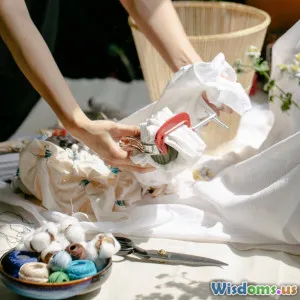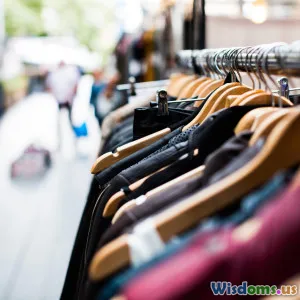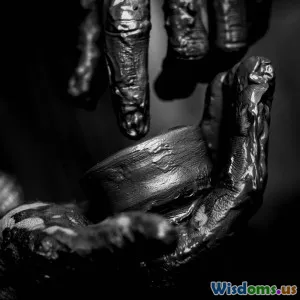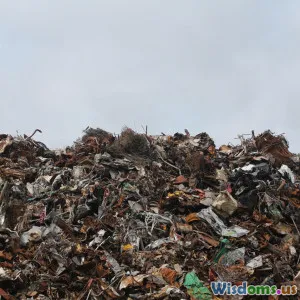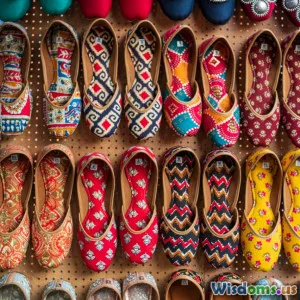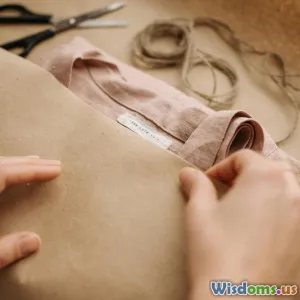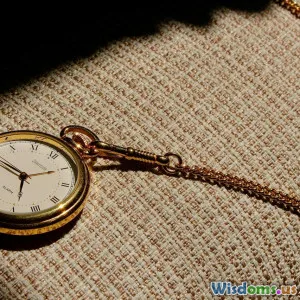
Slow Fashion Investments Five Timeless Pieces Worth Buying
8 min read Discover five timeless slow fashion pieces that offer lasting style and sustainable investment for your wardrobe. (0 Reviews)
Slow Fashion Investments: Five Timeless Pieces Worth Buying
In a world where fast fashion churns out disposable trends at lightning speed, an emerging movement champions a thoughtful, sustainable alternative—slow fashion. Rooted in quality, ethics, and longevity, slow fashion encourages buying less but better. Investing in timeless pieces not only enhances your wardrobe but also supports environmental, social, and economic sustainability. If you're ready to rethink how you shop and what you wear, this article reveals five slow fashion investments that transcend fleeting fads, offering enduring style and value.
Understanding Slow Fashion: More Than a Trend
Slow fashion is about intentionality. Unlike fast fashion’s rapid production cycles and momentary appeal, slow fashion focuses on thoughtful consumption, sustainable materials, and ethical craftsmanship. This approach reduces landfill waste, curbs exploitation, and promotes enduring style. Designer Stella McCartney, a slow fashion advocate, pledges to “make fashion without cost to the environment,” underscoring the industry’s potential for change.
Slow fashion investment isn’t just a purchase; it’s a commitment to quality, durability, and style that outlives seasonal trends. Let’s explore five wardrobe pillars that exemplify these principles.
1. The Classic Trench Coat
Timeless Functionality Meets Sustained Style
The trench coat epitomizes timeless outerwear. Originating with waterproof military wear in the early 20th century, today’s trench maintains its elegant silhouette and practical charm. Investing in a durable, well-tailored trench made from sustainable materials like organic cotton or recycled polyester means you acquire an enduring piece equipped for various seasons and occasions.
Why Invest?
- Versatility: Worn over casual or formal attire, indoors or out, it transcends style boundaries.
- Sustainability: Premium slow fashion brands such as Kings of Indigo and Everlane produce trench coats with eco-friendly dyes and materials.
- Longevity: Crafted with natural or recycled fibers, a good trench resists wear for decades.
A Notable Example
Burberry’s heritage trench coat remains a slow fashion icon despite its luxury price point. In 2020, they introduced a biodegradable version, underscoring how classic styles can innovate sustainably.
2. The White Button-Down Shirt
The Foundation of Versatile Dressing
A crisp white button-down shirt forms the base of countless outfits—professional, casual, or sophisticated. The catch? Most of the chemically treated cotton shirts turning fast fashion shelves arguably diminish the sustainability potential.
Why This Piece?
- Durability: Choose organic cotton or bamboo linen options for increased breathability and durability.
- Adaptability: Styles from oversized to tailored fit allow personal expression without compromising the timelessness.
- Sustainability: Brands like People Tree and Pact produce organic cotton shirts certified by Global Organic Textile Standard (GOTS).
Real-World Insight
According to the Textile Exchange, organic cotton crop cultivation uses significantly less water and fewer pesticides than conventional cotton, making the slow fashion white shirt an environmental win.
3. High-Quality Denim Jeans
More Than Just Casual Wear
Denim has evolved from workwear to a fashion staple. Yet, fast fashion’s relentless low-priced jeans cycle contributes to pollution and social issues in manufacturing countries.
What to Look For
- Fabric Integrity: Raw, selvedge, or organic cotton denim enhances longevity.
- Construction: Reinforced seams and heavy-duty stitching prevent premature wear.
- Ethical Making: Brands like Nudie Jeans and Outland Denim emphasize fair wages and zero-waste practices.
Sustainability Stats & Benefits
It’s estimated that producing one pair of conventional jeans consumes 1,800 gallons of water. By selecting sustainable denim options, consumers reduce water usage and often support transparent supply chains.
4. The Leather Loafer
When Elegance Meets Durability
Shoes often suffer the fate of fast wear and disposability. Investing in a pair of high-quality leather loafers combines classic style with long-term use.
Investment Considerations
- Material: Opt for vegetable-tanned leather or innovative plant-based alternatives like Piñatex or mushroom leather to reduce environmental impact.
- Craftsmanship: Look for Blake or Goodyear welt construction allowing resoling and longer life.
- Timelessness: Minimalist design in neutral colors ensures seasonless wearability.
Insight:
Research from the Leather Working Group indicates that environmentally responsible leather production is achievable with defined protocols, proving loafers can be both luxurious and sustainable.
5. The Wool Sweater
Cozy Comfort with Endurance
Nothing beats the warmth and tactile satisfaction of a wool sweater during chilly days. Slow fashion redefines it using responsibly sourced fibers and honoring traditional craftsmanship.
Why Choose Wool?
- Biodegradability: Wool decomposes naturally without harming the environment, unlike synthetic fibers.
- Durability: Merino wool blends resist pilling, odors, and stains.
- Ethical Practices: Brands like Patagonia and Eileen Fisher maintain strict animal welfare standards.
The Heritage Edge
Knitting traditions in regions such as Scotland, Ireland, and Peru mean that hand-crafted wool garments connect consumers with cultural heritage and sustainable livelihoods.
Conclusion: Redefining Wardrobe Investments for a Sustainable Future
Investing in these five timeless slow fashion pieces transcends trends and speaks to conscious consumerism. The classic trench coat, white button-down shirt, high-quality denim jeans, leather loafers, and wool sweater each represent pillars of a sustainable and stylish wardrobe.
By selecting these well-crafted pieces, you contribute to reducing fashion waste, supporting ethical labor practices, and fostering a wardrobe that serves you beautifully for years. The era of disposable style is waning—embrace durable elegance, and let slow fashion investments redefine your approach to dressing and sustainability.
Take Action
- Evaluate your current wardrobe for fast fashion items.
- Invest strategically in these core pieces.
- Support brands committed to transparency and ethical manufacturing.
Through mindful choices, fashion transforms from a fleeting indulgence into a powerful statement of respect—for the planet, workers, and personal style.
References
- Textile Exchange, "Organic Cotton Market Report," 2022.
- Burberry, "Sustainability Report," 2020.
- Leather Working Group, Environmental Protocols, 2021.
- Patagonia, "Animal Welfare Standards," 2023.
Rate the Post
User Reviews
Popular Posts










